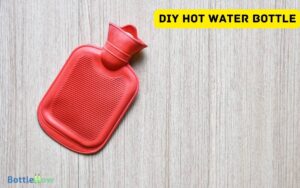How to Make a Mousetrap With a Water Bottle
To make a mousetrap using a water bottle, start by gathering a clean, dry bottle, scissors, string, a small stick, and bait like peanut butter. Cut off the top third of the bottle and smooth the edges.
Invert the cut section to create a funnel and secure it inside the bottom half. Place the bait at the far end to lure the mouse in.
Position the trap in an area with rodent activity and check regularly. Handle and dispose of any captured rodents responsibly.
Clean and inspect the trap for reuse. For a detailed step-by-step guide, continue below.
Key Takeaways
- Cut a clean, dry water bottle in half and invert the top section to create a funnel.
- Secure the inverted funnel section inside the bottom half of the bottle.
- Smooth any sharp edges and check for snug fit to ensure safety and functionality.
- Place bait, such as peanut butter or cheese, at the far end of the bottle to attract the mouse.
- Position the trap in areas with rodent activity and monitor regularly for effectiveness.
Gather Your Materials
To begin, collect an empty water bottle, scissors, string, bait, and a small stick. Confirm the water bottle is clean and dry. The scissors should be sharp enough to cut through plastic. The string needs to be sturdy but thin, as it will act as a trigger mechanism. Choose bait that's enticing to mice, such as peanut butter or cheese. The small stick will function as a support for the trap.
Place all materials on a clean, flat surface for easy access. Verify that each item is in good condition and ready for use. Organize your workspace so you can methodically proceed with assembling the trap without interruptions.
This preparation will streamline the construction process and enhance your efficiency.
Prepare the Water Bottle
Start by cutting off the top third of the water bottle with your scissors, making sure a clean and even cut. This step is important for the functionality of your mousetrap.
Place the cut portion aside; you'll need it later.
Next, thoroughly rinse the bottle to remove any remaining liquid or residue. Dry it completely to prevent any issues with the adhesive later.
After cleaning, inspect the bottle for any sharp edges where you made the cut. Use sandpaper to smooth these edges, reducing the risk of injury. Ensure the bottle is structurally sound, without cracks or weak spots. This preparation stage is vital for creating a reliable trap.
When ready, proceed to the next steps for further modifications.
Cut the Bottle
Begin by marking the cutting lines on the water bottle to guide your cuts.
Next, carefully cut around the bottle neck, making sure you follow the marked lines.
Mark Cutting Lines
Using a marker, draw a horizontal line around the circumference of the water bottle approximately one-third from the bottom. This line marks where you'll make your initial cut. Make sure the line is even and continuous by rotating the bottle as you draw. Consistency is important for maintaining balance in the trap.
Next, draw a second line just below the bottle neck, near the top. This will be your guide for the next cutting phase. Double-check both lines for accuracy and completeness. Misalignments can compromise the trap's effectiveness. Keep your markers and tools at hand for adjustments.
Cut Bottle Neck
With your cutting lines clearly marked, carefully slice along the horizontal line near the bottom of the bottle using a sharp utility knife or scissors. Guarantee your cuts are smooth and steady to maintain precision. Hold the bottle firmly to prevent any slips that could result in uneven edges or potential injury.
Once you've separated the bottom portion, set it aside.
Next, focus on the neck of the bottle. Cut around the top where the neck begins to taper. This will create a funnel shape essential for the trap mechanism. Make sure the cut is as straight as possible. Your goal is to achieve a clean cut that will fit snugly into the bottom half of the bottle later on.
Smooth Sharp Edges
To guarantee safety and functionality, carefully sand down any sharp edges on the cut sections of the bottle. Use fine-grit sandpaper for this task. Hold the bottle securely and gently rub the sandpaper along the cut edges. Rotate the bottle to ensure you smooth every part uniformly. Focus on making the edges even and rounded to prevent injury and ensure the trap works effectively.
Inspect the edges closely. If you find any rough spots, continue sanding until all areas are smooth to the touch. Wipe the bottle with a damp cloth to remove any plastic dust.
Create the Trap Door
To create the trap door, start by measuring and cutting an appropriate opening in the water bottle.
Next, secure the hinges properly to guarantee stability.
Measure and Cut Opening
Before you begin cutting, measure a rectangular opening at the top of the water bottle to create the trap door. Use a ruler to guarantee the dimensions are accurate. A recommended size is 2 inches by 3 inches, but adjust based on your bottle size.
Mark the rectangle with a permanent marker. Using a utility knife or sharp scissors, carefully cut along the marked lines. Verify the cuts are clean and precise to allow the trap door to function smoothly. Remove the cut-out piece and set it aside; you'll need it later.
Double-check the opening's edges to confirm they're smooth, as jagged edges can hinder the trap's operation. Proceed methodically to maintain accuracy and safety.
Secure Hinges Properly
Using the cut-out piece, attach small hinges to one of its longer edges, ensuring they align perfectly with the bottle's opening. This step is essential for creating a functional trap door.
Methodically follow these steps:
- Position Hinges: Place the hinges on the longer edge of the cut-out piece.
- Mark Holes: Use a marker to outline where the screws will go.
- Drill Holes: Carefully drill small pilot holes on the marked spots.
- Attach Hinges: Secure the hinges with screws, ensuring they're firmly in place.
Ensure Smooth Operation
How can you guarantee the trap door operates smoothly and effectively?
First, make sure the edges of the trap door are smooth. Use sandpaper to eliminate any roughness.
Next, test the door's movement by opening and closing it multiple times, making certain it doesn't stick or jam.
Attach a small weight, like a washer, to the bottom of the door to help it close reliably.
Use a thin, flexible wire to connect the trap door to the trigger mechanism. The wire should be taut but not overly tight; adjust as necessary.
Finally, lubricate the hinges lightly with a drop of oil.
This methodical approach ensures the trap door functions seamlessly, increasing the likelihood of successfully catching your target.
Assemble the Trap
Start by cutting the water bottle in half to create two separate sections. The top section will serve as the entrance, while the bottom will act as the trap chamber. Now, invert the top section and insert it into the bottom section, forming a funnel. Confirm the edges align smoothly. Secure the two sections together using tape or glue to ensure they stay in place. To enhance the effectiveness of the trap, add bait such as sugar water or fruit scraps to attract insects. If you’re looking for sustainable hydration options, you might also be wondering where to buy Kangen water bottle for everyday use.
Visualize the setup:
- Top Section: Acts as the funnel entrance.
- Bottom Section: Holds the captured mouse.
- Smooth Edges: Prevents the mouse from escaping.
- Stable Fit: Ensures secure assembly.
Next, check the alignment to make sure there are no gaps.
This funnel design directs the mouse into the trap chamber, leveraging its natural curiosity.
Pay attention to the fit; it should be snug to avoid any escape routes. This setup guarantees the mouse can't climb back out.
Secure the Trap Door
To secure the trap door, make sure you attach it firmly to prevent the mouse from escaping once inside.
Begin by cutting a small flap near the top of the bottle. This flap serves as the trap door. Use a sturdy material, such as a paperclip or small piece of wire, to create a hinge on one side of the flap. Make certain the hinge allows the door to swing inward but not outward.
Next, attach a small weight or magnet to the bottom of the flap to keep it closed when the mouse enters. Test the door by pressing it gently to confirm it opens inward easily but stays shut from the inside.
This setup guarantees the mouse remains trapped securely.
Set the Bait
To effectively set the bait, you'll need to choose an attractive option like peanut butter or cheese.
Place a small amount inside the water bottle, near the entrance.
Make sure the bait is secure and visible to lure the mouse into the trap.
Choosing the Bait
Selecting the right bait is essential for ensuring the success of your water bottle mousetrap. Mice are attracted to specific foods, making your choice of bait a critical factor in luring them into the trap.
Consider using:
- Peanut butter: Its strong scent and sticky texture make it hard for mice to resist.
- Cheese: A classic option that many mice find appealing.
- Chocolate: The sweet aroma is highly enticing to mice.
- Nuts and seeds: High in fats and proteins, these are natural attractants.
Each bait has unique properties that can enhance the effectiveness of your trap. Choose one based on availability and the specific preferences of the mice in your area. Your careful selection will greatly impact the trap's success rate.
Placing the Bait
Carefully place the bait at the far end of the water bottle to make certain the mouse ventures fully inside before triggering the trap. Use a small amount of peanut butter or a similar attractant that adheres well to surfaces. This guarantees the bait remains in place and doesn't scatter.
Position the bait deep enough so the mouse must enter entirely to reach it. This placement is essential for the trap's effectiveness. Make sure the water bottle is stable and won't tip over when the mouse enters. A stable setup increases the likelihood of successful capture.
Double-check the bait placement, making any necessary adjustments to ensure it's secure and enticing. Following these steps methodically will optimize your mousetrap's performance.
Position the Trap
Position the mousetrap in an area where you've noticed frequent rodent activity. Look for signs such as droppings, gnaw marks, or tracks. Place the trap along walls or in corners, as mice tend to travel along these paths. Confirm the trap is stable and won't tip over.
Consider these ideal locations:
- Kitchen: Near cabinets or underneath appliances.
- Basement: Close to storage areas or utility pipes.
- Garage: Along the edges of the floor or near stored items.
- Attic: Near insulation or entry points.
Monitor the Trap
Regularly check the trap to make sure it's functioning correctly and to dispose of any captured mice promptly. Inspect the trap every few hours, especially in areas with high rodent activity. Look for signs of tampering or displacement that might indicate a caught mouse or a failed mechanism.
If the bait remains untouched, consider changing its type or location within the trap. Confirm that the trap is securely in place and hasn't been moved by curious pets or children. Verify that the entrance isn't blocked and that the trap is still able to capture mice effectively.
Dispose of the Rodent
Once you've confirmed a mouse has been caught, it's time to dispose of the rodent safely and hygienically. Follow these steps meticulously to make certain you handle the situation correctly.
First, put on disposable gloves to avoid direct contact with the rodent.
Next, carefully remove the trap from the area, making sure not to spill any contents.
Place the entire trap inside a sealable plastic bag.
Seal the bag tightly to prevent any contaminants from escaping.
Dispose of the sealed bag in an outdoor trash bin.
Immediately wash your hands thoroughly with soap and water.
Clean and Reuse
Thoroughly cleaning the mousetrap guarantees it's ready for reuse and maintains effectiveness. Start by disassembling the trap, making sure all components are separated. Rinse each part under warm water, using mild dish soap to eliminate any residue or smell. Scrub gently with a brush to ensure thorough cleaning, especially in hard-to-reach areas. Rinse again to remove soap. Allow the components to air dry completely to avoid rust or mold.
Inspect each part for any damage or wear. Replace any compromised pieces before reassembling the trap. Regular maintenance not only extends the trap's lifespan but also ensures it functions at its best.
Conclusion
And there you have it, a DIY mousetrap crafted from a humble water bottle.
You've turned recycling into rodent control, and who knew you'd become an eco-friendly exterminator?
By following these precise steps, you've not only trapped a mouse but also elevated your problem-solving skills.
Now, as you dispose of your tiny intruder with the grace of a seasoned pro, remember: your ingenuity knows no bounds.
Clean up, reset, and revel in your newfound pest-purging prowess.





